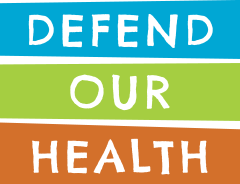Back to School – What’s in your dairy?
September 1, 2021 | Safe Food | Tags: Cheese, Dairy, Defend Our Health, Food Industry, forever chemicals, pfas, Safer Materials, Schoo, Toxic Chemicals
Dairy products are ubiquitous in kids’ lunchboxes and school meals – milk, yogurt, string cheese, boxed or pre-made mac and cheese — the list goes on. Kids aged 2-11 make up the largest age demographic of dairy consumers, consuming an average of 1.4 cups of milk a day. But as many of us prepare to send our kids off to school this fall with milk money or packaged cheese in their lunchboxes, it’s important for consumers to know what’s in our dairy.
The bad news is that dairy does seem to be contaminated with chemicals that have no business being there. This is a problem that affects anyone involved in any way with dairy, from production to consumption. It affects us as consumers whether we’re buying organic or conventional products. It hits farmers and workers even harder, as they’re exposed to toxic water, soil, and contact surfaces even more frequently.
Some contamination occurs because of what dairy cows are ingesting. Farms across the country, including in Maine, participated in state-sponsored programs to use leftover biosolid “sludge” from waste treatment as fertilizer. But this sludge also contained the “forever chemical” PFAS, a chemical linked with cancer and other health concerns. Some farms located near military bases or PFAS manufacturing facilities also have been exposed to PFAS for many years. PFAS at these sites makes its way into the soil, water, feed, and of course cows’ bodies – and then into dairy products. While regular testing should catch high levels of PFAS before it makes its way into grocery stores, even small quantities are unsafe for human consumption and might go undetected. And of course, the contamination is devastating to dairy farmers on affected farms.
Then, there’s how the milk is processed and packaged. Milk comes into contact with milking machinery, tubing gets milk from one place to another, conveyor belts transfer processed cheeses and other products, and finally is packaged and shipped to stores. For each of these steps, dairy comes into contact with a variety of materials, and the some of the chemicals on those surfaces can leach into our food. These include plastics and rubbers that are treated with chemicals called ortho-phthalates that make plastics bendy, but that are also known to leach into fatty foods and disrupt reproduction and endocrine function. Some surfaces may be treated with coatings like PTFE (commonly known as Teflon), a type of PFAS that makes surfaces nonstick.
Frustratingly, because dairy encounters many different materials and surfaces on its way to kids’ lunches, it’s really hard to say for sure which parts of the process are contributing to contamination. What we do know for sure is that toxic chemicals commonly used by the food industry make their way into dairy products. For example, our report on cheese products found phthalates in nearly every sampled cheese product, including popular mac and cheese brands.
At Defend Our Health, we’ve been fighting for safer food for years, and we’re continuing to fight for our kids’ right to food free of toxic contaminants. We’re making sure farmers who’ve discovered high levels of PFAS on their farms have enough time to report it and seek damages. We’re pushing for stricter limits and more testing for PFAS. We’ve successfully engaged with Annie’s mac and cheese to remove phthalates from their products. We’re continuing to push other major brands like Kraft to take note and follow suite. And we’re identifying safer materials that can be used in processing and packaging — in the coming months we’ll be creating a guide to help the food industry identify safer materials they can use and phase out toxic ones.
What you can do for safer dairy:
- Less processed dairy is probably safer. For example, we found that block cheese showed less phthalate contamination than powdered cheese.
- Sign our petition asking Kraft to keep toxic chemicals out of their products (many of which are marketed towards young kids and busy families!)
- Join our mailing list, or donate today to join our fight for cleaner dairy products!
